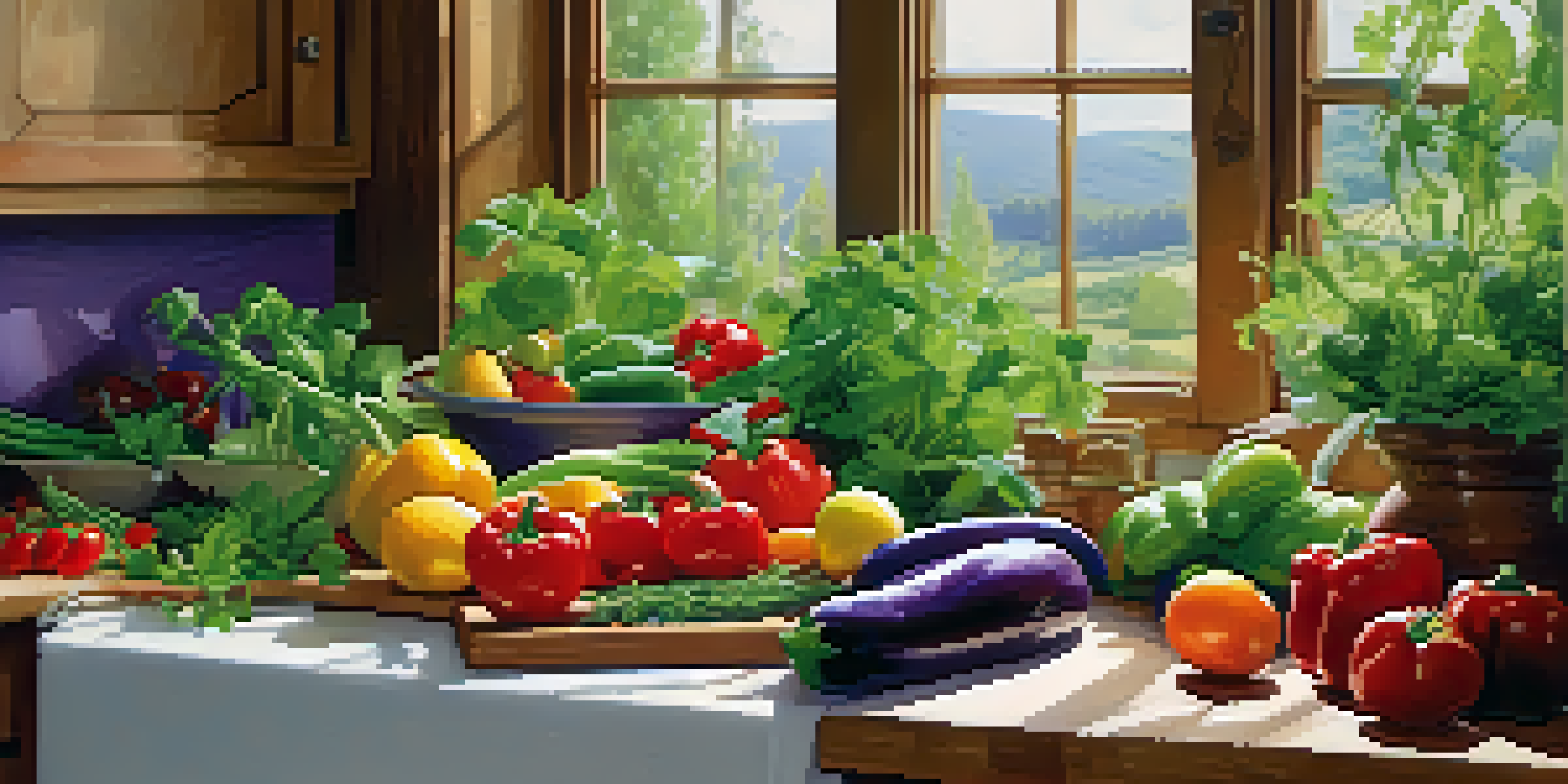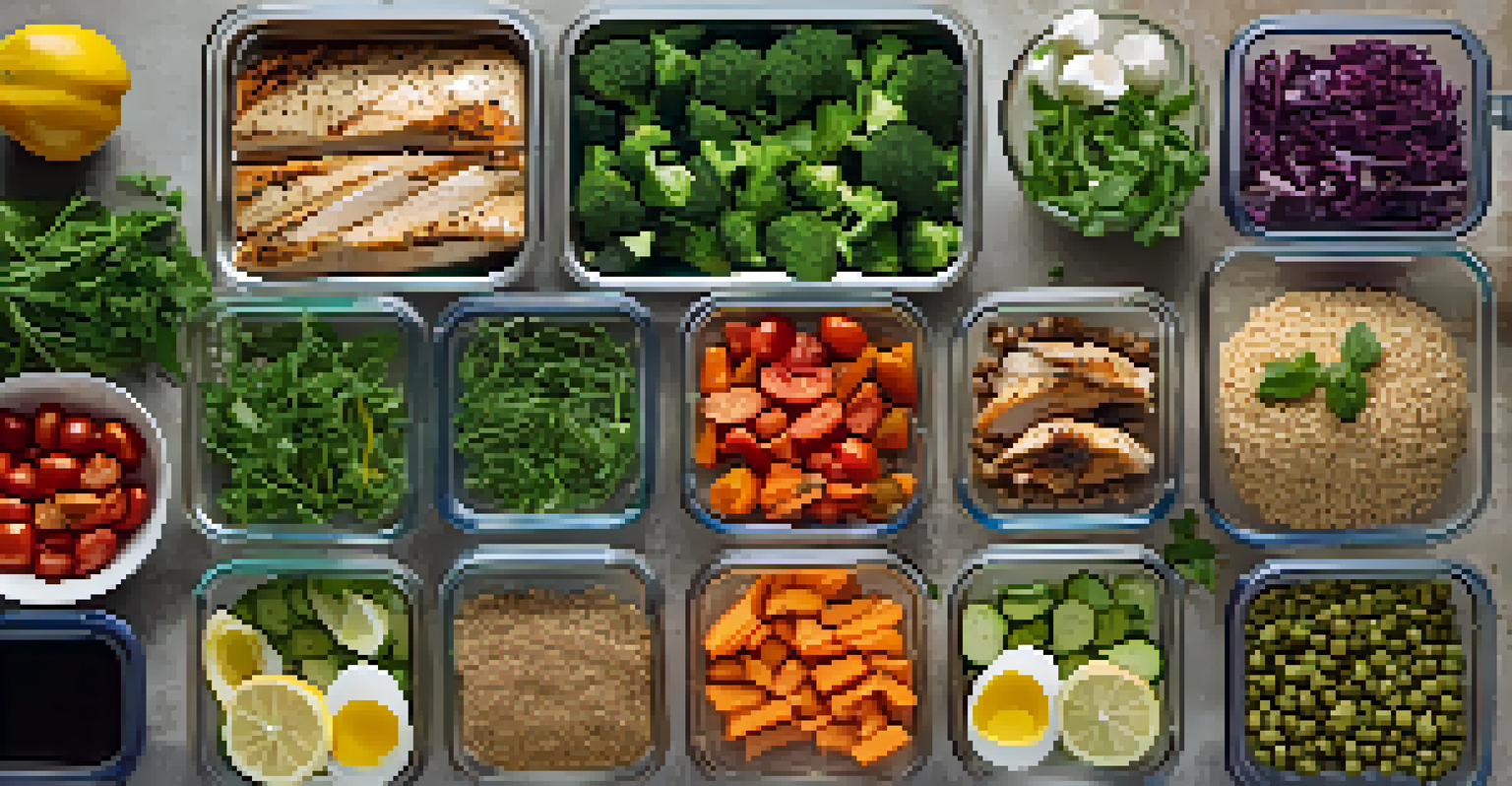Cooking for Allergies: Healthy Techniques to Consider

Understanding Common Food Allergies and Their Impact
Food allergies can significantly affect daily life, making meal planning a challenge. Common allergens include nuts, dairy, gluten, soy, and shellfish, and reactions can vary from mild to severe. Understanding these allergies is crucial for creating safe and enjoyable meals.
Food allergies can be a tricky puzzle, but with the right knowledge and tools, we can create safe and delicious meals for everyone.
If you're cooking for someone with allergies, it's essential to know not just what to avoid but also how to substitute those ingredients. For example, if a recipe calls for wheat flour, you might consider using almond or coconut flour instead. This knowledge empowers you to innovate while keeping your meals safe.
Additionally, education plays a key role in allergy management. Familiarizing yourself with food labels and cross-contamination practices can minimize risks. This way, you can confidently serve meals that everyone at the table can enjoy.
Safe Substitutions for Common Ingredients
When cooking for allergies, knowing how to substitute common ingredients can be a game-changer. For instance, if you need to replace dairy, options like almond milk or coconut yogurt can provide a creamy texture without the allergens. Similarly, for eggs, flaxseed meal mixed with water can work wonders in baking.

Consider using fresh herbs and spices to enhance flavors, especially when you're omitting certain ingredients. This not only adds depth but also keeps your dishes vibrant and exciting. Think of herbs like basil or cilantro as your go-to flavor boosters.
It’s also helpful to have a list of reliable brands that offer allergy-friendly products. Many companies now cater to specific dietary needs, making it easier than ever to find suitable alternatives without sacrificing taste.
Cooking Techniques to Minimize Allergens
Certain cooking techniques can help reduce the risk of allergen exposure. For instance, steaming vegetables can preserve nutrients while avoiding the use of oils that may contain allergens. When baking, consider using parchment paper to prevent sticking without resorting to butter or non-stick sprays.
Cooking is a way of healing; it’s about using fresh ingredients to nourish both the body and the soul.
Another vital technique is proper cleaning and sanitization of cooking surfaces and utensils. Even the smallest residue from a previous meal can trigger an allergic reaction. A good practice is to designate specific cutting boards and utensils for allergy-friendly cooking.
Additionally, batch cooking can be beneficial. Preparing meals in larger portions allows you to control ingredients better and eliminates the need to cook frequently, reducing the chance of cross-contamination.
Meal Planning for Allergy-Friendly Cooking
Effective meal planning is a cornerstone of cooking for allergies. Start by creating a weekly menu that outlines all meals, ensuring each is free from allergens. This not only saves time but also helps you avoid last-minute decisions that could lead to mistakes.
Involving those with allergies in the planning process can also lead to more enjoyable meals. Ask for their preferences and favorite dishes, and work together to find safe alternatives. This collaboration fosters a positive cooking experience for everyone.
Lastly, consider preparing snacks in advance. Allergy-friendly snacks like fruit bars or nut-free granola can be lifesavers for busy days. Having these options on hand reduces the temptation to grab something unsafe.
Reading Labels: A Must for Allergy Safety
Reading food labels is critical when cooking for allergies, as many packaged foods contain hidden allergens. Ingredients can often be misleading or use different names, so it's essential to familiarize yourself with these potential traps. For example, casein is a milk protein that can appear in unexpected products.
Be on the lookout for terms like 'may contain traces of nuts' or 'produced in a facility that processes wheat.' These disclaimers can help you make informed decisions before purchasing items. Taking a little extra time to read labels can prevent serious allergic reactions.
Also, don't hesitate to contact manufacturers if you have questions about their products. Many companies are happy to provide clarity about their ingredients and manufacturing processes, which can help you feel more secure in your choices.
Incorporating Seasonal and Local Ingredients
Using seasonal and local ingredients not only enhances the flavor of your dishes but can also reduce allergen exposure. Fresh ingredients are less likely to contain preservatives or additives that could trigger allergies. Plus, they support local farmers and contribute to a sustainable food system.
When you shop at local farmers' markets, you can often speak directly with producers about their growing practices. This transparency allows you to make informed choices about what you’re putting on your plate. It’s a great way to build a relationship with your food source.
Additionally, seasonal cooking encourages creativity in the kitchen. You might find yourself experimenting with new fruits and vegetables that can lead to delightful, allergy-friendly recipes. Embracing what’s in season can keep your meals fresh and exciting.
Building a Supportive Cooking Community
Creating a cooking community can be incredibly beneficial for those managing food allergies. Sharing experiences, recipes, and tips with others facing similar challenges fosters a sense of belonging and support. Whether it's through social media groups or local meetups, connecting with others can spark new ideas.
Consider hosting potluck dinners where everyone brings an allergy-friendly dish. This not only diversifies the meal options but also allows you to discover new recipes that you might not have tried otherwise. Plus, it’s a fun way to enjoy good food with good company.

Lastly, don’t underestimate the power of online resources. Blogs, forums, and recipe websites dedicated to allergy-friendly cooking are plentiful. Engaging with these platforms can provide valuable insights and inspiration for your own cooking journey.